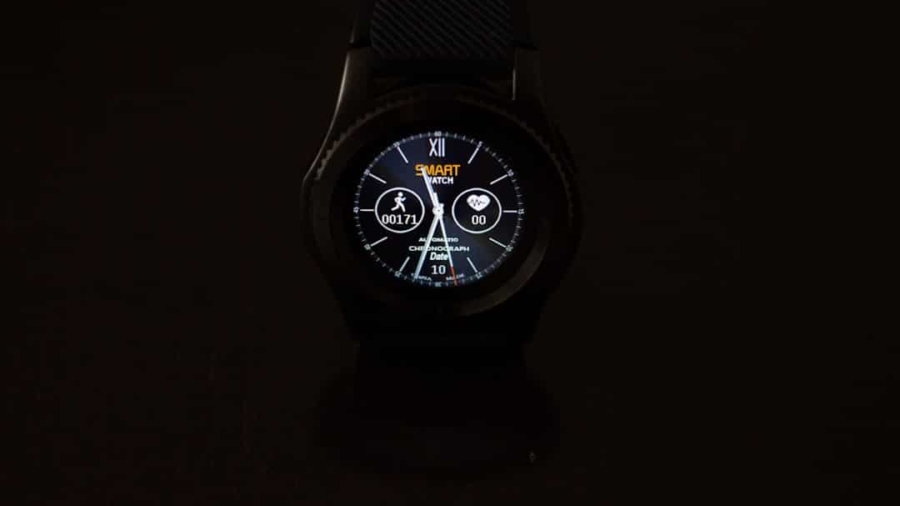The advent of wearable technology has revolutionized various sectors, and the workplace is no exception. Wearables, which include devices such as smartwatches, fitness trackers, and augmented reality glasses, have become increasingly integrated into daily work routines. These devices not only serve personal health and fitness purposes but also play a pivotal role in enhancing workplace efficiency and safety.
As organizations strive to create healthier work environments, the adoption of wearables is becoming a strategic priority. The potential benefits of these technologies extend beyond individual health monitoring; they encompass broader implications for organizational productivity and employee well-being. In recent years, the proliferation of Internet of Things (IoT) devices has facilitated the development of sophisticated wearables that can collect and analyze data in real-time.
This capability allows employers to monitor various aspects of their workforce, from physical health to mental alertness. As companies increasingly recognize the importance of employee wellness, wearables are emerging as essential tools for fostering a culture of safety and productivity. The integration of these devices into workplace practices not only enhances operational efficiency but also empowers employees to take charge of their health, ultimately leading to a more engaged and motivated workforce.
Key Takeaways
- Wearables in the workplace are becoming increasingly popular for monitoring physical health and safety, tracking fatigue and mental alertness, providing real-time feedback and alerts, enhancing communication and collaboration, improving ergonomics and posture, and preventing accidents and injuries.
- Wearables can monitor physical health and safety by tracking vital signs, detecting falls, and providing emergency alerts in case of accidents or health issues.
- Tracking fatigue and mental alertness through wearables can help prevent workplace accidents and injuries by identifying when employees may be at risk of making mistakes due to exhaustion or lack of focus.
- Wearables can provide real-time feedback and alerts to employees about their physical activity, posture, and environmental hazards, helping them make immediate adjustments to stay safe and healthy.
- By enhancing communication and collaboration, wearables can improve workplace safety by enabling quick and effective communication in emergency situations and promoting teamwork to address safety concerns.
Monitoring Physical Health and Safety
Proactive Health Monitoring
One of the most significant advantages of wearables in the workplace is their ability to monitor physical health and safety. Devices equipped with sensors can track vital signs such as heart rate, body temperature, and even blood oxygen levels. For instance, in high-risk industries like construction or manufacturing, wearables can alert workers when they are experiencing signs of heat stress or fatigue, thereby preventing potential health crises.
Compliance with Occupational Health Regulations
This proactive approach to health monitoring can significantly reduce the incidence of workplace injuries and illnesses, creating a safer environment for employees. Moreover, wearables can facilitate compliance with occupational health regulations by providing real-time data on workers’ physical conditions. For example, companies can utilize wearables to ensure that employees are adhering to safety protocols, such as wearing personal protective equipment (PPE) or maintaining safe distances in hazardous environments.
Data-Driven Decision Making
By continuously monitoring these factors, organizations can identify trends and make informed decisions about workplace safety measures. This data-driven approach not only enhances employee safety but also fosters a culture of accountability and responsibility within the organization.
Tracking Fatigue and Mental Alertness
Fatigue is a significant concern in many workplaces, particularly in industries that require long hours or shift work. Wearable technology has emerged as a valuable tool for tracking fatigue levels and mental alertness among employees. Devices equipped with advanced algorithms can analyze sleep patterns, activity levels, and even biometric data to assess an individual’s state of alertness.
For example, a wearable might monitor an employee’s heart rate variability and sleep quality to determine whether they are adequately rested for their tasks. By providing insights into fatigue levels, wearables enable employers to implement strategies that promote better work-life balance and mental well-being. Organizations can use this data to adjust work schedules or implement mandatory breaks for employees showing signs of fatigue.
Additionally, some wearables offer features that remind users to take breaks or engage in mindfulness exercises, further supporting mental health in the workplace. This proactive approach not only enhances employee performance but also reduces the risk of accidents caused by impaired judgment or decreased focus.
Providing Real-Time Feedback and Alerts
The ability to provide real-time feedback is one of the most transformative aspects of wearable technology in the workplace. Wearables can deliver instant alerts regarding various parameters, such as environmental conditions or individual performance metrics. For instance, smart helmets used in construction sites can notify workers about hazardous conditions like high noise levels or toxic gas exposure.
This immediate feedback allows employees to take corrective actions promptly, thereby minimizing risks associated with their work environment.
Wearables can track productivity metrics, such as the number of tasks completed or time spent on specific activities.
This data can be invaluable for managers seeking to optimize workflows and identify areas for improvement. By fostering a culture of continuous feedback through wearables, organizations can enhance employee engagement and motivation while simultaneously driving performance improvements.
Enhancing Communication and Collaboration
Wearable technology has the potential to significantly enhance communication and collaboration within teams. Devices such as smart glasses or wrist-worn communicators enable seamless interaction among team members, regardless of their physical location. For example, augmented reality glasses can provide remote assistance by overlaying digital information onto the user’s field of vision, allowing experts to guide on-site workers through complex tasks without being physically present.
This capability not only streamlines communication but also fosters collaboration across different departments or locations. Moreover, wearables can facilitate better information sharing during meetings or collaborative projects. Employees equipped with smartwatches can receive notifications about meeting updates or project deadlines without needing to check their phones or laptops constantly.
This unobtrusive form of communication allows for greater focus during discussions while ensuring that team members remain informed about critical developments. As organizations continue to embrace remote work and flexible arrangements, the role of wearables in enhancing communication will become increasingly vital.
Improving Ergonomics and Posture
The integration of wearables into workplace ergonomics represents a significant advancement in promoting employee health and comfort. Many wearables are designed to monitor posture and provide feedback on ergonomic practices throughout the workday. For instance, smart devices can detect when an employee is slouching or sitting for extended periods without breaks and send reminders to adjust their posture or take a walk.
This proactive approach helps mitigate the risk of musculoskeletal disorders, which are prevalent in sedentary jobs. Additionally, wearables can assist organizations in designing workspaces that prioritize ergonomics. By analyzing data collected from employees’ movements and postures, companies can identify areas where adjustments are needed—such as desk height or chair design—to create a more comfortable working environment.
This focus on ergonomics not only enhances employee well-being but also contributes to increased productivity by reducing discomfort and fatigue associated with poor posture.
Preventing Accidents and Injuries
The potential for wearables to prevent accidents and injuries in the workplace cannot be overstated. By leveraging real-time data collection and analysis, organizations can identify potential hazards before they lead to incidents. For example, wearables equipped with GPS technology can track workers’ locations in hazardous environments and alert them if they enter restricted areas or come too close to dangerous machinery.
This capability is particularly valuable in industries such as mining or oil extraction, where safety risks are inherent. Moreover, wearables can facilitate emergency response efforts by providing critical information during incidents. In the event of an accident, devices can automatically alert emergency services with the worker’s location and relevant health data, expediting response times and potentially saving lives.
By integrating wearables into their safety protocols, organizations can create a more proactive approach to accident prevention that prioritizes employee well-being.
The Future of Wearables in Promoting Workplace Safety
As wearable technology continues to evolve, its role in promoting workplace safety will likely expand further. The integration of artificial intelligence and machine learning into wearables will enhance their capabilities, allowing for more sophisticated data analysis and predictive modeling. This evolution will enable organizations to anticipate potential safety issues before they arise and implement targeted interventions to mitigate risks.
Furthermore, as employees become more accustomed to using wearable technology in their personal lives, their acceptance in professional settings will likely increase. Organizations that embrace this trend will not only enhance workplace safety but also foster a culture of innovation and employee engagement. The future of wearables in the workplace promises a more connected, informed, and safe working environment where employees are empowered to prioritize their health and well-being while contributing to organizational success.
A related article discussing the return of Instagram’s founders to the social media scene can be found at this link. This article explores the impact of their return on the platform and what lessons can be learned from their experience. It is interesting to see how social media influencers and platforms like Instagram can play a role in promoting safer work environments for shift workers through the use of wearables.
FAQs
What are wearables?
Wearables are electronic devices that can be worn on the body as accessories or as part of clothing. They are designed to collect data and provide information about the user’s health, fitness, location, and more.
How are wearables promoting safer work environments for shift workers?
Wearables can track a shift worker’s vital signs, fatigue levels, and location, allowing employers to monitor their well-being and ensure they are not at risk of injury or accidents. This data can also be used to optimize work schedules and provide timely interventions if necessary.
What types of wearables are being used in the workplace?
Some common types of wearables being used in the workplace include smartwatches, fitness trackers, and biometric sensors. These devices can monitor heart rate, activity levels, and sleep patterns, providing valuable insights into a worker’s health and well-being.
Are there any privacy concerns associated with using wearables in the workplace?
Yes, there are privacy concerns related to the use of wearables in the workplace. Employers must ensure that they are transparent about the data being collected and how it will be used. Workers should also have the right to consent to the use of wearables and have their privacy protected.
What are the potential benefits of using wearables in the workplace?
Using wearables in the workplace can help employers improve worker safety, reduce the risk of accidents, and optimize work schedules. It can also promote a healthier work environment by monitoring and addressing issues related to fatigue and stress.



